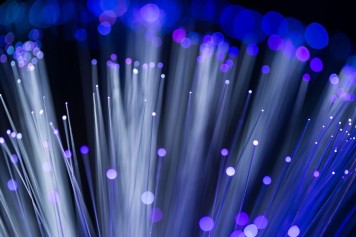The Power of a Network of Co-op Networks
April 12, 2024
Electric cooperatives know the power of aggregating the interests of multiple co-ops. From the formation of generation and transmission (G&T) co-ops to materials distribution co-ops to billing platforms and more, co-ops have often operated collectively to achieve scale they lack individually.
When Randy Klindt planned the fiber network at Co-Mo Electric, he and Darren Farnan at United Electric leveraged their combined purchasing power. They started with materials, negotiating pricing with vendors for their pooled volumes, even as they each purchased their materials separately.
When Randy formed Conexon, he used the same approach to purchase aggregate volumes of fiber, connectivity equipment, and electronics for Conexon’s first clients. Each co-op bought materials and electronics individually, using the discounted price for their collective volumes that Randy had negotiated.
Today, Conexon negotiates on behalf of almost 100 co-ops that are building hundreds of thousands of miles of networks.
- All savings we negotiate are passed on to the co-ops. Over the years, we have never marked up manufacturers’ prices.
- Where we build, every penny per foot saved makes it possible to reach rural America with world-class broadband.
Our approach has allowed us to work directly with manufacturers.
- Working with CommScope, for example, we were able to develop more efficient, less costly connectivity equipment and fiber cable.
- When we developed a voice business, we flipped the model from one where the underlying voice carrier made $20 or $25 and shared $5 or $10 with the co-op to one where the co-ops made the $20 or $25.
- We have taken this approach again and again – with marketing capability, NOCs, call centers – allowing each individual co-op to achieve the scale in purchasing, construction, and operations of a million-member co-op.
And we are only just getting started in assisting co-ops in leveraging their collective interests for scale benefits.
The Conexon Network Impact
Above is a map created by one of Conexon’s fiber design team members.
It depicts the fiber networks we are building with electric co-ops in northern Florida and central Georgia. Soon, we will be able to transport traffic from networks on the Gulf Coast of Florida to Atlanta, Georgia — wholly on electric co-op networks.
Why it matters:
Over the years, we have occasionally been denied dedicated internet access (DIA) by middle mile providers seeking to insulate their affiliate ISP divisions from competition. While this behavior violates the Communications Act (and in years past, I have filed complaints with the FCC), experience has taught me that self-help is faster.
As Conexon builds and connects co-op fiber networks, co-ops in Florida and Georgia will be able to avoid middle mile, or DIA costs, by having their traffic travel wholly on co-op networks to internet exchange points. This collective co-op network will not only save each ISP transport costs, it also will add redundancy to the routes, reducing the risk of outages.
The map above is a small but important piece of a large fiber ring we are building with co-ops throughout the Southeast and Midwest.
- Within the next few years, I expect we will have completed a co-op fiber ring that runs from Georgia to Florida, across Alabama to Louisiana, and up through Arkansas and Oklahoma to Missouri, completing the southern route of the ring.
- This co-op ring will further connect Missouri to co-op networks that route through Illinois, across the Ohio River to Kentucky, on to Tennessee, and then back to Georgia.
The Future of Fiber

Long-haul fiber networks are not new; for decades, Sprint, Level 3, Zayo, and other companies built long-haul fiber networks that took advantage of rail lines and interstate highways.
By contrast, electric co-op fiber networks are being built from the last mile out, connecting substations with fiber rings and co-op fiber networks with one another.
- Think of it as a way to avoid all highways by traveling on backroads — at the speed of light.
- The power of this network will be as familiar to every electric distribution and G&T co-op as it is unfamiliar to most in the cable and telecommunications industry.
- It means the scale power co-ops have achieved in the past in generation, transmission, and distribution of electricity can be used by co-ops for broadband to decrease costs, add redundancy, and increase reliability.
Years ago, when Randy Klindt was general manager of OzarksGo, he proposed an Arkansas ring to connect every co-op in the state that was building a fiber network. Others in Arkansas put that idea into practice, creating the Diamond State network.
Co-ops working with Conexon are taking that model one step further. I’d encourage other co-op communities to do the same. And as we pass municipalities and IOU territories, Conexon will invite any municipal network or IOU fiber network to join us in building and maintaining the co-ops’ collective futures.
